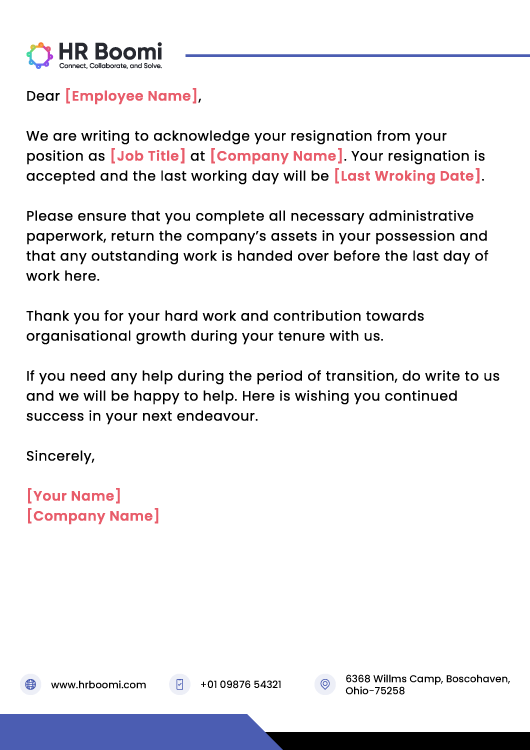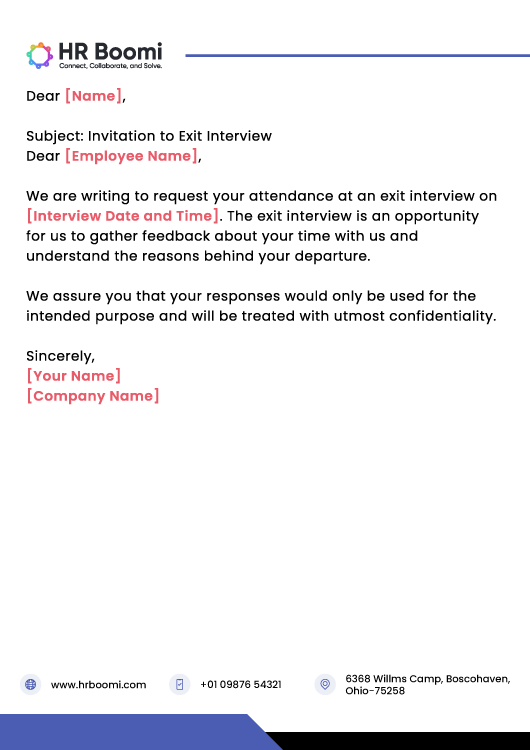
Table of Contents
The exit process is invoked when an employee leaves the organisation. The exit could be voluntary (the employee resigns) or involuntary (termination by the company). A systematic exit process ensures that the employee’s exit is as smooth as possible and that the company’s interests are well protected. The exact sequence of the steps involved in the process could vary depending on the company’s size and business sector.
What are the Consequences of an Incomplete Employee Exit Process
If an employee does not complete the exit process properly, the organisation may face several problems, such as:
- Loss of critical information
- Loss of productivity
- Security risks
- Legal issues
- Negative impact on morale
- Difficulty in accounting
How to Ensure a Safe Exit Process for Employees in a Company?
A company can create a safe exit process by following these steps:
Establish Clear Guidelines
A well-documented exit process should be made available for all employees, preferably on the company’s intranet. The document should include clear guidelines on the steps to be followed and their preferred sequence. This could include returning company property, completing exit paperwork, and providing notice of resignation. Any procedures relating to the completion of documentation or handing over work to colleagues should also be made clear.
Encourage Open Communication
Just because an employee is leaving should not mean the communication channels are closed. On the other hand, it is even more important to ensure that the employee can discuss with their manager openly any issues or concerns which need to be addressed before the employee’s last working day. This will facilitate a smooth transition and leave the employee with a better experience.
Ensure Data Security
Following the tenet of providing access to only those who need it and to the level they need, the leaving employee’s access should be revoked in a timely manner.
Provide Support
Provide support for the departing employee, such as offering a reference or helping with job search efforts, to maintain a positive relationship.
Conduct Exit Interviews
Conduct exit interviews to gather feedback from departing employees and identify any areas for improvement.
Significance of HR Letters in Exit Process
HR letters can play a significant role in making the employee’s departing exit process safe by serving as clear and formal documentation of the process. This includes:
Confirming Resignation
The HR letter can confirm the details of the employee’s resignation or exit along with their last working day. This serves as a trigger for initiating exit formalities and process steps.
Outlining Expectations
Clearly documenting the immediate steps to be taken and procedures to be followed by the employee will set the expectations. These next steps could outline which department to meet, when for what purpose and the expected outcome of the step. This way HR can ensure all the expectations about handing over office property like laptops and transitioning work to colleagues are outlined minimising any risks arising from not performing those tasks.
Providing Information
Apart from various procedural steps, the HR team can provide information relating to the employee’s final settlement amount along with calculations so that the employee can clarify with HR if there are any questions.
Documenting Steps Taken
HR can issue letters confirming the steps taken during the entire off-boarding process. Having these letters actually serve as a record of all actions taken and can prove useful in case of any disputes later on.
Encouraging Open Communication
HR letters can also encourage Open Communication between the employee and the company which can help to maintain a positive relationship and minimise stress for the employee during the departure.
Top 5 HR Letters Required in the Exit Process
In an off-boarding process the following HR letters are typically considered necessary:
#1 – Resignation Acceptance Letter
The exit process begins with HR formally accepting an employee’s resignation and acknowledging their departure from the company. The Resignation Acceptance Letter is sent exactly for this purpose. It should include the effective date of departure and any conditions that need to be met before the resignation is considered official.

#2 – Severance Agreement Letter
When an employee has to go for reasons beyond anyone’s control like financial downturn or organisational restructuring, this letter helps to set the conditions that both parties agree to. These are usually the employer offering monetary compensation in return for the leaving employee’s confidentiality and/or non-compete agreements.

#3 – Release of Liability Letter
This letter is usually signed along with the severance letter. The objective of this letter is to ensure that the organisation is protected against any future litigations by the departing employee. The release of liability letter is signed by the employee releasing the employer of any or all liabilities including but not limited to breach of agreement, discrimination or harassment.

#4 – Full and Final Settlement
All the information about the employee’s final paycheck, including any outstanding payments, deductions, and benefits, can be provided using this letter.

#5 – Exit Interview Letter
The HR team can use this letter to request an employee to attend an exit interview, which is a meeting between the employee and an HR representative to gather information about their reasons for leaving the company.

Apart from the above, you could follow the standard retirement benefits process when an employee is exiting after retirement.
Conclusion
These letters are a must-have for the HR-administered exit process. They document the entire exit process the HR department oversees to ensure compliance with relevant regulations and local laws. These letters when written professionally and with an appropriate tone will further enhance the company’s brand as they demonstrate positive culture.
Recent Posts
-

In-house vs. Outsourced Payroll: Pros and Cons
-

Mastering Talent Retention: A Corporate Challenge
-

What is employer branding and how to apply it in your company?
-

The Significance of Employee Communication Within
-

What is time management and why is it important?
-

Net salary: what is it and how is it calculated?
-

Enhancing Employee Experience: Strategies for Excellence
-

10 Best Gifts to Boost Sales Channels
